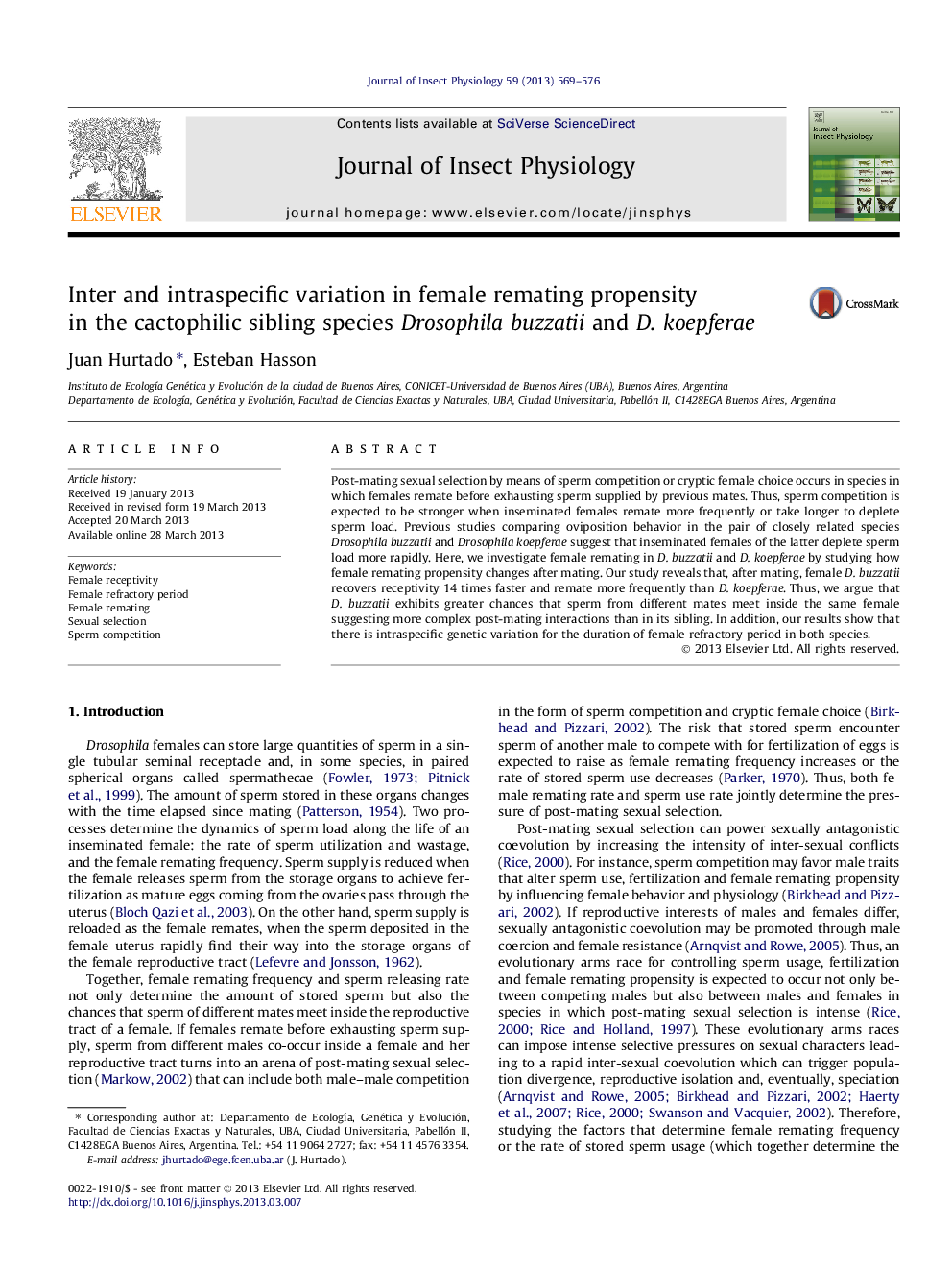| Article ID | Journal | Published Year | Pages | File Type |
|---|---|---|---|---|
| 2840469 | Journal of Insect Physiology | 2013 | 8 Pages |
•We studied female remating propensity in the sibling D. buzzatii and D. koepferae.•Mating reduced female receptivity, which was then recovered with time in both species.•Female latency to remating depended on first male and female genotypes.•Female refractory period was 14 times shorter in D. buzzatii than in D. koepferae.•Higher female remating rate and sperm competition risk are expected in D. buzzatii.
Post-mating sexual selection by means of sperm competition or cryptic female choice occurs in species in which females remate before exhausting sperm supplied by previous mates. Thus, sperm competition is expected to be stronger when inseminated females remate more frequently or take longer to deplete sperm load. Previous studies comparing oviposition behavior in the pair of closely related species Drosophila buzzatii and Drosophila koepferae suggest that inseminated females of the latter deplete sperm load more rapidly. Here, we investigate female remating in D. buzzatii and D. koepferae by studying how female remating propensity changes after mating. Our study reveals that, after mating, female D. buzzatii recovers receptivity 14 times faster and remate more frequently than D. koepferae. Thus, we argue that D. buzzatii exhibits greater chances that sperm from different mates meet inside the same female suggesting more complex post-mating interactions than in its sibling. In addition, our results show that there is intraspecific genetic variation for the duration of female refractory period in both species.
Graphical abstractFigure optionsDownload full-size imageDownload as PowerPoint slide
